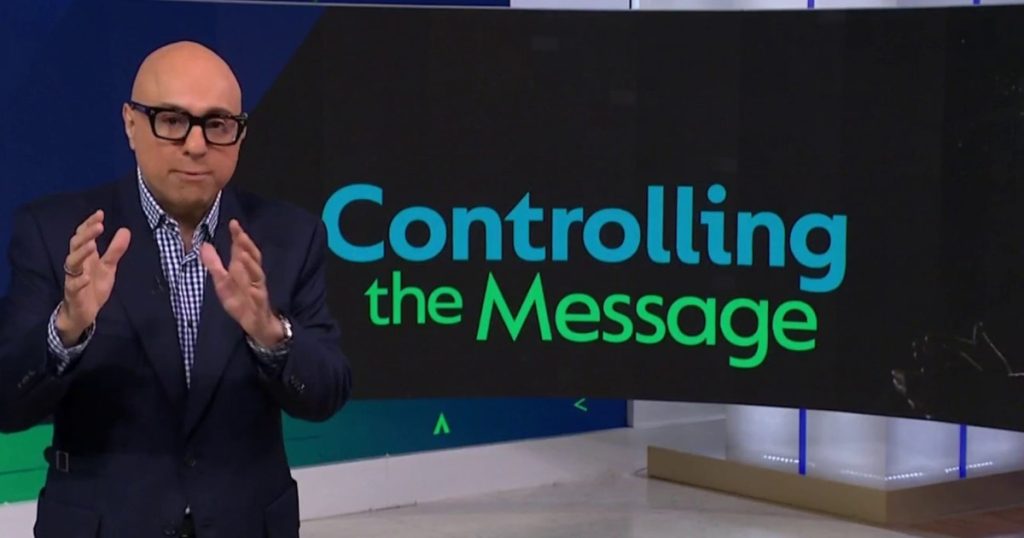Listen to the article
The growing tension between propaganda and democratic resistance in Trump’s America has reached a new inflection point, as the administration increasingly relies on state-controlled messaging to project strength while citizen protests expand nationwide.
Political analysts and historians are documenting what they describe as a systematic attempt by the Trump administration to blur the line between government policy and political propaganda. Administration officials have expanded the use of taxpayer-funded messaging across multiple platforms, including state-run media outlets, carefully choreographed public appearances, and even video displays in airports and federal buildings.
“What we’re witnessing is a deliberate strategy to communicate an image of consolidated power,” said Dr. Rebecca Goodman, professor of political communications at Georgetown University. “These tactics aren’t new historically, but their implementation within the American system represents a significant departure from democratic norms.”
The administration’s communication apparatus now includes a network of government-produced media content distributed through both traditional and digital channels. Videos highlighting the president’s accomplishments play on screens in federal buildings and transportation hubs across the country, while official White House messaging increasingly characterizes critics as threats to national stability.
However, political scientists point to a crucial development in this dynamic: the stronger the administration’s messaging becomes, the more visible and organized the resistance grows. The recent “No Kings” protests that swept through major cities demonstrated this counterforce, with tens of thousands participating in what organizers described as a defense of democratic principles.
“There’s a fundamental misunderstanding in authoritarian messaging,” explained Dr. Marcus Henderson, historian at the University of Chicago. “In democratic systems, power isn’t simply seized or proclaimed—it requires public consent. What we’re seeing now is an increasingly vocal segment of the population withdrawing that consent.”
Civil liberties groups have raised concerns about the blurring boundaries between state communication and propaganda. The American Civil Liberties Union has filed multiple lawsuits challenging the legality of using federal resources for what they characterize as partisan messaging rather than public information.
“The Constitution establishes clear limits on executive power precisely because the founders feared concentrated authority,” said Eliza Washington, constitutional law professor at Columbia University. “When government communication shifts from informing citizens to demanding loyalty, we’ve crossed into dangerous territory.”
Supporters of the administration counter that strong messaging is necessary to maintain public order and achieve policy goals in a divided nation. White House spokesperson James Miller defended the communication strategy as “direct engagement with the American people, bypassing a hostile media environment.”
Public opinion researchers note a deepening polarization in how Americans perceive these developments. A recent Pew Research survey found that while 78% of the president’s supporters view the administration’s communications as “necessary leadership,” 83% of opponents describe the same messaging as “authoritarian propaganda.”
What makes the current situation historically significant is the technological landscape in which this contest is playing out. Unlike past periods of government expansion, today’s digital environment allows for both unprecedented distribution of official messaging and equally powerful grassroots organization against it.
Professor Henderson noted that throughout American history, periods of governmental overreach have typically triggered corrective countermovements. “What’s remarkable now is the speed and scale at which this dialectic is occurring. Digital tools accelerate both the projection of power and the resistance to it.”
The conflict reveals a fundamental tension in American democracy: the delicate balance between governmental authority and citizen sovereignty. As one protest organizer put it, “The administration seems to have forgotten that in a democracy, citizens aren’t subjects—we’re the actual source of legitimate authority.”
This dynamic continues to evolve as both sides adapt their strategies, with neither achieving a decisive advantage. The struggle underscores a principle that historians have long observed: in democratic systems, power ultimately resides in public consent—and that consent, once withdrawn, cannot be reclaimed through propaganda alone.
Verify This Yourself
Use these professional tools to fact-check and investigate claims independently
Reverse Image Search
Check if this image has been used elsewhere or in different contexts
Ask Our AI About This Claim
Get instant answers with web-powered AI analysis
Related Fact-Checks
See what other fact-checkers have said about similar claims
Want More Verification Tools?
Access our full suite of professional disinformation monitoring and investigation tools



